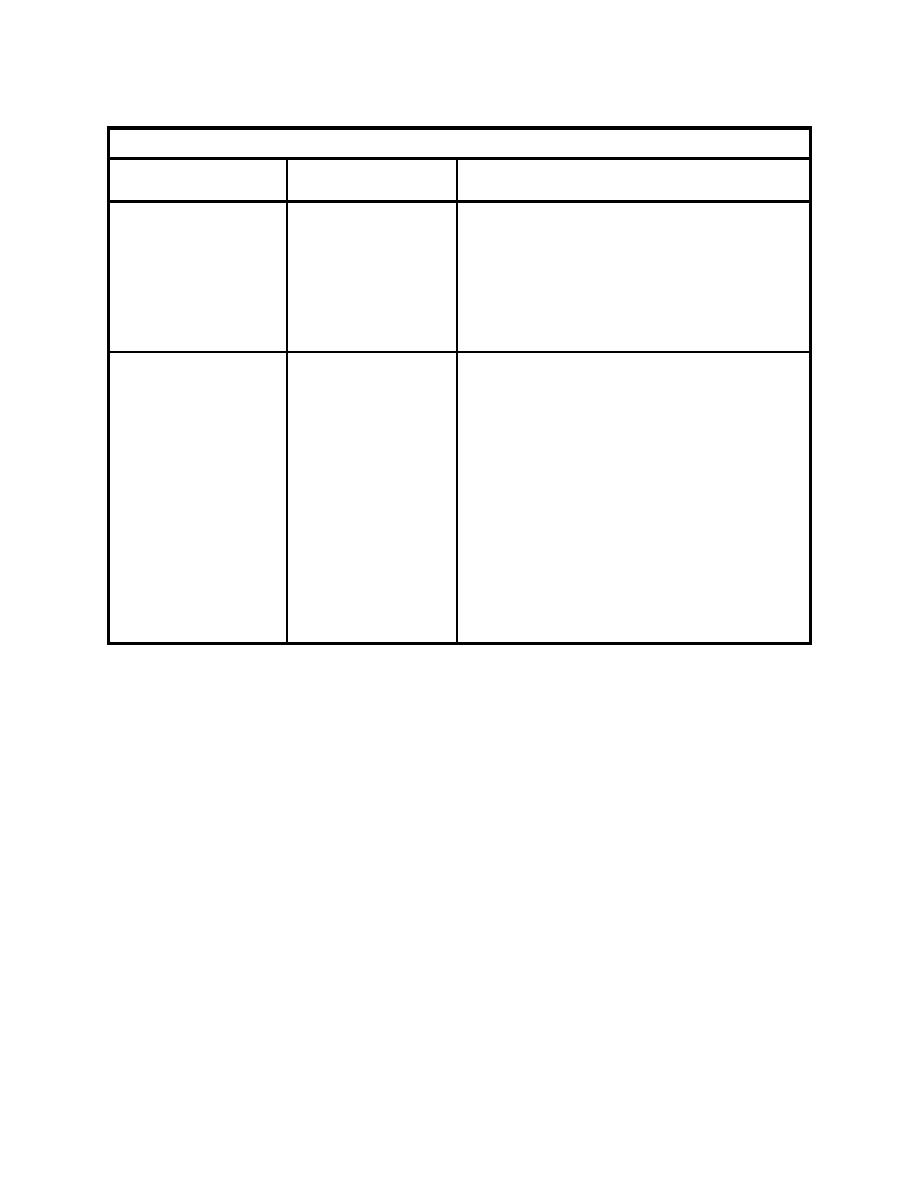 |
||
|
|
||
|
Page Title:
Table 6. Data Requirements and Testing Standards for Soils and Dredged Material (cont.) |
||
| |||||||||||||||
|
|
 ERDC TN-DOER-R6
December 2004
Table 6 (Concluded)
ASTM Procedures
and References
Requirement
Comments
Procedures for establishing the optimum dry unit weight
Moisture Content and Dry
ASTM D4959-00
and water content ranges required for attainment of the
Unit Weight
(ASTM 2000b)
desired hydraulic conductivity are discussed in Daniel
Daniel and Benson
and Benson (1990). These procedures involve the
(1990)
compaction and permeameter evaluation of five or six
soil samples at each of the three compactive efforts:
modified Proctor, standard Proctor, and "reduced"
Proctor, for a total of 15 to 18 analyses for each soil to
be evaluated for use.
Hydraulic Conductivity and
Increased accuracy of conductivity estimates will be
Permeability
assured if test materials are in a compaction state
similar to the condition expected in the field.
Constant Head Perme-
ASTM 2434-68
For high hydraulic conductivity materials.
ameter
(ASTM 2000e)
Flexible Wall Perme-
ASTM 5084-00
For low and high hydraulic conductivity materials.
ameter
(ASTM 2000f)
Evaluation of
PSDDF
Provides a means to estimate hydraulic conductivity of
(Stark 1996)
liner materials following consolidation.
compression, and
desiccation of dredged
fill for determining
long-term storage
requirements
Synthetic Liners. Utilization of synthetic materials, including geomembranes, geonets, and geotextiles,
in CDF liners and leachate collection systems also requires testing of individual components for
compliance with contract specifications.
Serving as relatively impermeable barriers to liquids or vapors, geomembranes typically possess
permeability (measured by water vapor transmission tests (ASTM 1995) from 0.3x10-10 cm/sec to 0.5x10-13
cm/sec. Table 7 summarizes additional recommended minimum properties for geomembranes, including
applicable ASTM test methods for thickness, tensile strength, tear resistance, puncture resistance, and
impact resistance.
Leachate Collection Systems. Leachate collection systems are comprised of geosynthetic materials
(geotextiles overlying geonets), natural materials (sand or gravel filtration and drainage layers), or a
combination of geosynthetics and natural materials (e.g., geotextile overlying high hydraulic conductivity
sand drainage layer). Requirements for minimum hydraulic conductivity for granular and synthetic
materials are provided in Table 8.
CONSTRUCTION CONSIDERATIONS: CDF liner construction differs in many ways from
construction methods used for solid and hazardous waste landfills, due to the high water content of
dredged material, remote and sometimes difficult site accessibility, and potential low trafficability of the
working surface. Liner construction must also consider the future employment of other CDF control
systems, including lateral containment and cover systems, as well as costs. Further, CDF liner systems
16
|
|
Privacy Statement - Press Release - Copyright Information. - Contact Us - Support Integrated Publishing |